Caulfield Grammar top students reflect a diversity of talents
You’d be familiar with Chris Judd and John Landy, but Caulfield Grammar’s past students also include a former Victorian premier who saved victims in two kidnappings, and a man who runs a US-based legal service for needy people facing the death penalty.
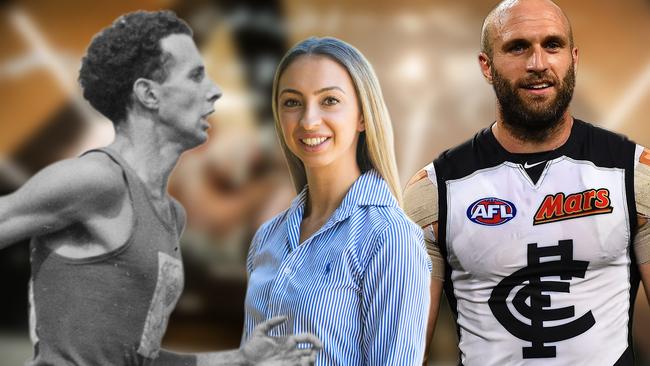
Inner South
Don't miss out on the headlines from Inner South . Followed categories will be added to My News.
From Brownlow medallists and Olympians, to doctors, lawyers and politicians, Caulfield Grammar School has produced leaders in every field.
Here’s our top 10 most outstanding graduates the Caulfield school has produced in its 139-year history.
1. JAMI KLISARIS, CLASS OF 2010
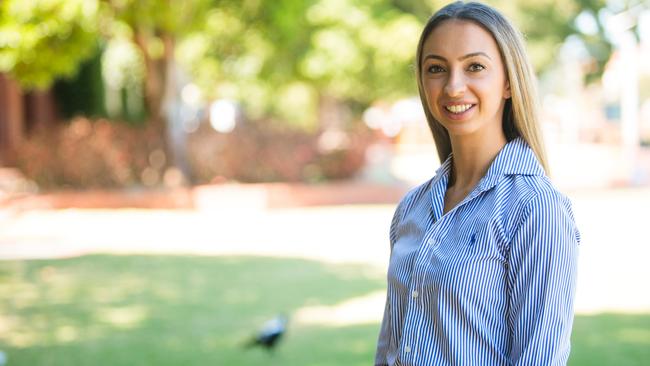
Jami Klisaris is a councillor at the City of Stonnington and former mayor.
In 2012, at age 20, she became Stonnington’s youngest councillor.
In November 2016, aged just 24, she became Stonnington’s youngest mayor, serving until November 2017.
Jami was elected to the MAV Board representing the Metro South East region in March 2017 and became the Metropolitan Deputy President.
She also served as a board member for the Prahran Mission from November 2012 to March 2015.
Jami’s best memory of CGS and its alumni remains “making the A final at the Head of School Girls, which was a first for the senior girls’ rowing team”.
On what inspired her, she said: “Justice drives me; I like to see fair outcomes for people which is one of the reasons I decided to run for council and why I want to become a lawyer.”
She said she had known she wanted to be a lawyer since she was 14.
She completed her Masters of Law, Juris Doctor (Law) at Monash University in May 2019.
2. MELISSA TAPPER, CLASS OF 2007
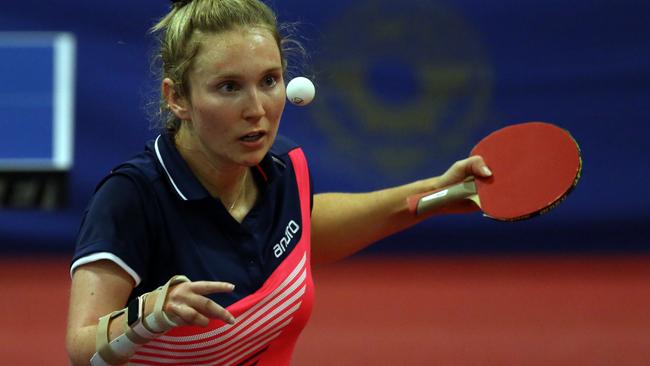
Born with brachial plexus injury, Melissa Tapper made history as the first Australian to compete in both the Rio 2016 Olympic and Paralympic Games.
Her rise in sport began when Paralympics Australia suggested she transition to para-table tennis.
She began training for national selection and won a bronze medal on her debut at the London 2012 Paralympic Games.
It was Australia’s best performance in para-table tennis at a Paralympic Games in 28 years.
Melissa became the first Australian Paralympic table tennis player to qualify for an able-bodied national team when she was selected to represent Australia at the 2014 Commonwealth Games in Glasgow, Scotland.
For Melissa, her most memorable moment came in 2018, when she became the first Australian to win a Commonwealth Games gold medal in table tennis in front of a home crowd.
Today, she describes her work and home life as “hectic, but when managed, a whole lot of fun”.
Reflecting on her best memory at CGS, she nominates her Year 12 final function and school mates singing Hallelujah.
“It was incredible and emotional at the same time,” she said, adding that the school had a knack for bringing out the best in students.
Asked what she would tell her 17-year-old self, she replied: “Learn to enjoy every moment for what it is. Take it all in, the good and the bad. It all shapes us into the person we are so make sure you are always looking for positive, happy moments.”
3. CHRIS JUDD, CLASS OF 2001
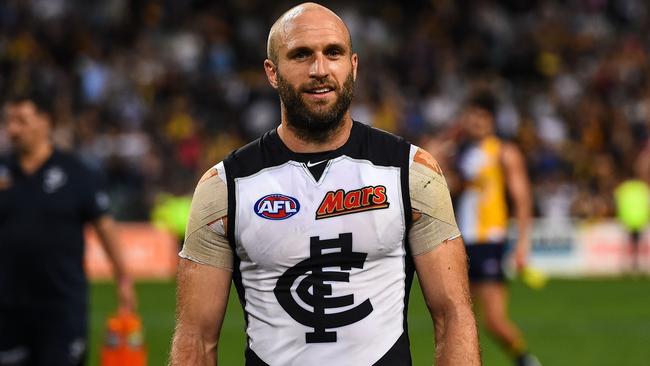
Chis Judd captained the West Coast Eagles and Carlton Football Club, and won the Brownlow Medal twice in 2004 and 2010.
Judd attended Caulfield Grammar School from 1996 to 2001.
He made his debut in Caulfield’s 1st XVIII football team in 1998 and became captain in 2001.
Judd was also a member of 1st X1 cricket team in 1999 and the athletics team from 1999 to 2001, winning the APS Under-17 1500m title in 1999.
Judd was awarded school colours in both football and athletics.
At speech night in 2001, Judd was awarded the Dougie Rankin Memorial Prize for Progress in Studies and Success at Sport.
He received an ENTER of 96.2 in the Victorian Certificate of Education.
In addition to representing Caulfield Grammar, Judd played junior football with East Sandringham Football Club and the Sandringham Dragons.
At the 2001 AFL Under-18 Championships, he was named captain of the Victorian Metropolitan team.
Judd was drafted by the West Coast Eagles at the end of 2001 and made his debut for the Eagles in the second round of the 2002 AFL season against Collingwood at the MCG.
After an impressive debut season he received the AFL Players Association Best First Year Player award.
Today, Judd juggles media roles and is a director and founding shareholder of Jaggad, an Australian exercise apparel business.
4. TAMSYN MANOU (NEE LEWIS), CLASS OF 1996
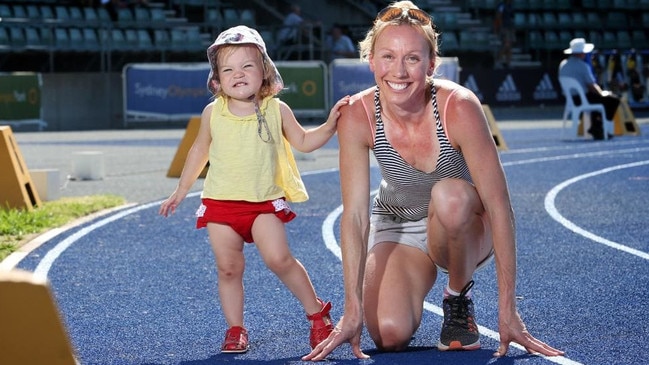
Tamsyn Manou, nee Lewis, came to prominence when, aged 15, she was selected for the Australian athletics team competing in the 1994 Commonwealth Games in Victoria, Canada.
In 1996 she competed in the World Junior Championships in Sydney and won a bronze medal as part of the Australian 4x400m relay team.
This was also the year Tamsyn became school co-captain, the first female to hold this position at its Caulfield Campus.
In the ensuing years, Tamsyn went on to show her mettle on the national and international athletics circuit.
Between 1998 and 2012, she competed in three Olympics, four Commonwealth Games and won 18 national titles.
Her achievements include:
■ Winning gold in the 4x400m relay in the 1998 Commonwealth Games in Kuala Lumpur, Malaysia;
■ Setting an Australian record for the 800m at the 1999 World Indoor Championships in Maebashi, Japan and took out bronze for the 4x400m relay;
■ Was a member of the Australian team for the 2000 Sydney Olympics and 2004 Athens Olympics and 2008 Olympics in Beijing;
■ Winning a gold medal in the 4x400m relay at the 2002 Commonwealth Games in Manchester as well as at the 2006 Games in Melbourne; and,
■ Winning the 800m at the World Indoor Championships in Valencia, Spain, in 2008, defeating a number of high-profile athletes, including the 2000 Olympic champion, Maria Mutola of Mozambique.
Away from the track, Tamsyn started a media career in 2005 with Melbourne radio station Triple M.
In 2006, she appeared on the television series Dancing with the Stars, finishing third.
Following her retirement from competitive athletics she has moved into the commentary box and together with Bruce McAvaney presented the track events at the 2016 Olympics in Rio de Janeiro and the 2018 Commonwealth Games on the Gold Coast.
She is head of athletics at Firbank Girls’ Grammar.
Tamsyn is married to former state cricketer Graham Manou, and has two children Izabella and Oliver.
5. HELENA DIX, CLASS OF 1996
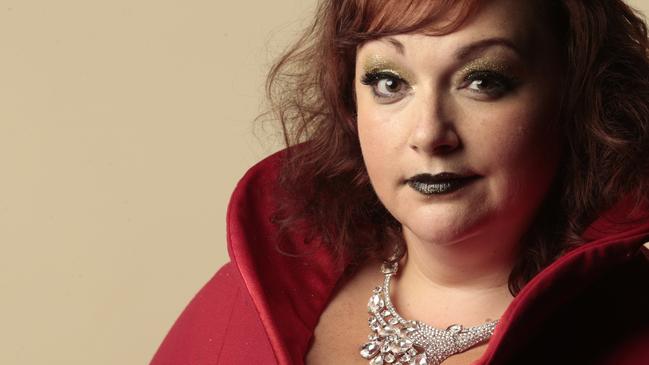
Melbourne-born opera singer Helena Dix can’t remember a time when she wanted to be anything else but a singer.
Today, the UK-based soprano has more reasons than ever to be grateful for her choice of career as she recovers from blood clots in her lungs as a result of COVID-19 complications in April this year.
“They (doctors) said it was one of the biggest they had ever seen. They couldn’t believe I was still breathing,” she said.
However, as Helena noted, singers are the Olympic athletes of breathing, and all her training and exercises helped her overcome what she described as a “petrifying” experience.
She remembers her 13 years at CGS fondly — they were spent on stage starring in school musicals and tinkering around in the music department.
She also dabbled in debating and suspects that her enjoyment for the subject was largely due to her strong opinions.
Helena’s operatic repertoire ranges from Mozart to Wagner but she is particularly in demand for bel canto roles such as Norma in Bellini’s opera and Elizabeth I in Donizetti’s Roberto Devereux.
She first covered Norma at the Metropolitan Opera, then performed the role in 2018 for Chelsea Opera, a UK company that presents operas in concert.
In 2019, she returned to Australia to play the role for Melbourne Opera to rave reviews.
Critics have described her as “the most exciting voice since Joan Sutherland”, and rated her performances “8 out of 5 stars”.
Helena has also enjoyed success in various prestigious competitions around the world and in
2015 she was awarded as an associate of The Royal Academy of Music for her significant contribution to the music industry.
Helena hopes to still be singing opera in the next five to 10 years.
6. ANITA MUNÕZ, CLASS OF 1995
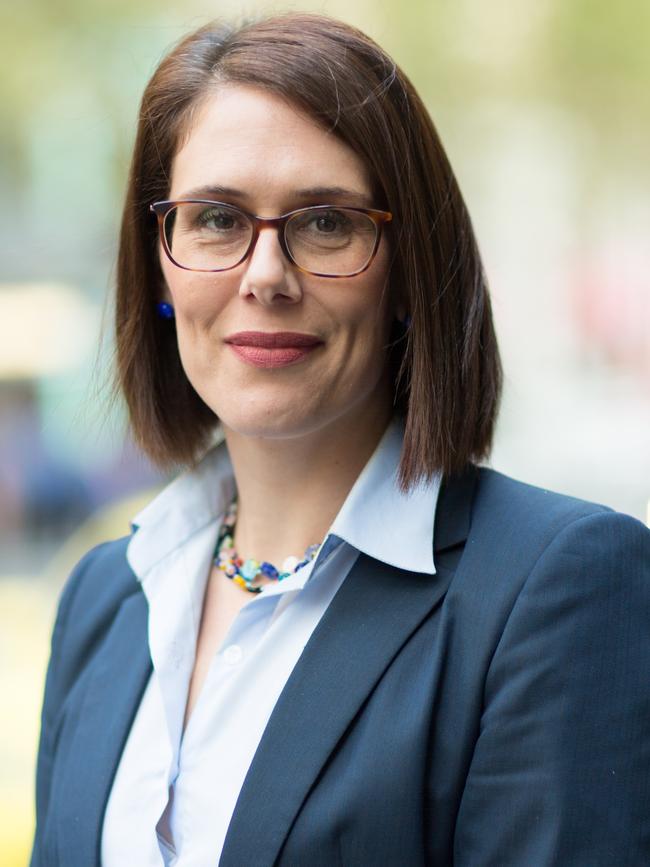
Anita Munoz graduated from Monash Medical School in 2002 and became a Fellow of the Royal Australian College of General Practitioners (RACPG) in 2007.
A doctor at Midtown Medical Clinic Melbourne since 2009, Anita is also a medical educator and RACPG examiner.
On her job, she said: “Hackneyed though it may sound, being a GP is the best job in the world. It is intellectually challenging, there is never a dull moment of course, but mostly it is the relationships I have formed with my patients that makes it so special.”
Outside of her medical occupation, Anita is president of The Grammarian Singers, a choir comprising alumni singers from Caulfield Grammar School formed in homage to the Madrigal Group that was drawing to a close in late 2016.
“The Grammarian Singers has recreated an experience we had when singing in Madrigal Group as students: a place to belong to, a place to make great music,” Anita said.
Over the next 12 months, the Grammarian Singers intend to expand its musical repertoire, exploring more complex music in genres of classical music, popular tunes, musical theatre, jazz and sacred works.
“We will begin singing for charity organisation events, as one of our goals is to engage in community service,” Anita said.
The group rehearses Monday evenings at the Wheeler Hill campus and she encourages any alumni thinking about getting involved to come along and see how much fun it is.
Reflecting on her years at CGS and CGA, Anita said: “Singing in Madrigal Group was an absolute highlight of my time at Caulfield Grammar.
“It gave me an education that was so much more than academic knowledge. It gave me music, the arts, friends that have lasted a lifetime, personal agency, self-determination. The staff at Caulfield Grammar School are its greatest asset.”
7. RICHARD BOURKE, CLASS OF 1987
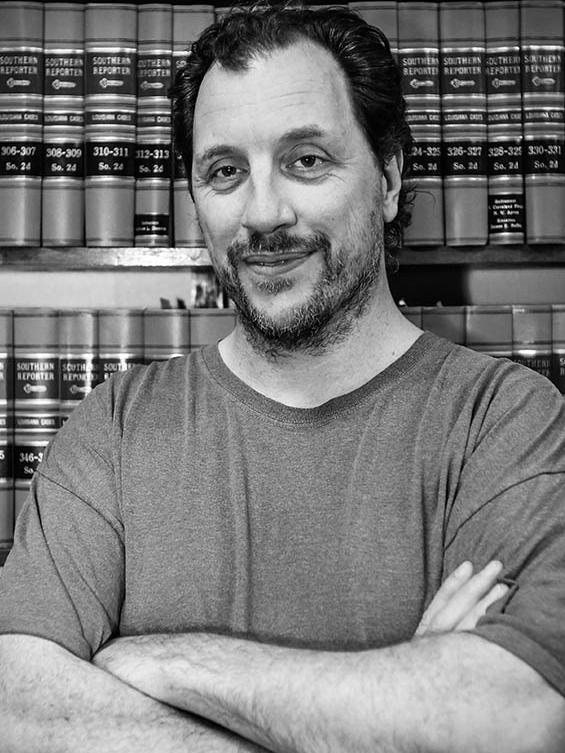
Richard Bourke arrived at CGS in 1982 and five years on, his entry in the official 1987 Year 12 Leavers Book recorded his intention to study law.
Today, he is the director of the Louisiana Capital Assistance Center (LCAC), a non-profit legal office in New Orleans that provides legal representation for people without
large financial means who are facing the death penalty.
It’s a world away from the Melbourne-based criminal law practice he once ran.
The fifth child of a GP and a lawyer, Richard spent time working with homeless youth while studying law.Although he wasn’t sold on a legal career, he realised the underprivileged needed good lawyers.
In 1998, he interned at LCAC before returning home and in 2001, together with fellow Australian barrister Nick Harrington, founded Reprieve Australia, an organisation that sends volunteers to help with death-penalty cases in the southern US states.
Richard permanently relocated to the US in 2002 and has been with the LCAC since then.
Early on, the Louisiana Bar refused to admit him to practise, despite him being fully qualified. Undaunted, Richard took the State of Louisiana to the Supreme Court. He won and was duly admitted.
In 2007, he was awarded the Sam Dalton Capital Defense Award by the Louisiana Association of Criminal Defense Lawyers.
8. JOHN LANDY — MALVERN CAMPUS, 1935-44
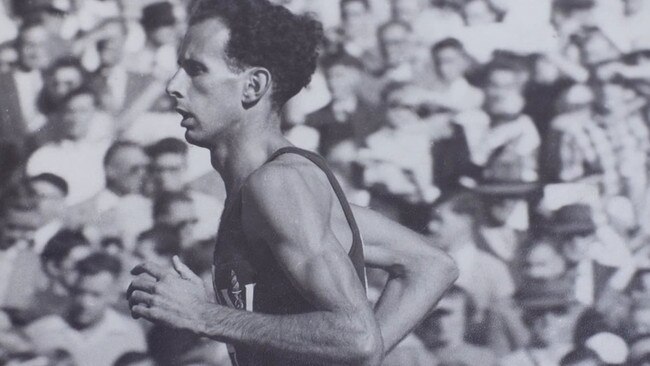
Now living in retirement in country Victoria, John Landy is arguably the best role model of sportsmanship for his spontaneous gesture to double back and help fellow runner, and then junior mile world record holder, Ron Clarke, who had fallen at the final of the mile race in the 1956 Australian National Championships.
Born in 1930, Landy did his primary and junior school years at the Malvern campus close to his home, before moving to Geelong Grammar in 1944 to complete high school.
He was the second man to break the four-minute mile barrier in Turku, Finland, 46 days after British Roger Bannister made world news on May 6, 1954, with a time of 3.59.4 in Oxford. Landy broke Bannister’s record with a time of 3.57.9.
The duo met later in 1954 at the British Empire Games in Vancouver, Canada.
In what was dubbed “The Mile of the Century”, both broke four minutes for the mile with Bannister winning the race.
In 1956 Landy made a comeback and was placed third in the 1500 metres at the Melbourne Olympics.
Away from sports, Landy gained a Bachelor of Agricultural science from the University of Melbourne and taught biology at Geelong Grammar’s Timbertop.
He later joined Imperial Chemical Industries where he became a senior manager.
He has written two books on natural history and served on the Victorian Land Conservation Council for eight years.
On January 1, 2001, he was appointed Governor of Victoria replacing Sir James Gobbo. He retired in April 2006.
Landy is a member of the Sport Australia Hall of Fame and has received many honours, including an MBE (Member of the Order of the British Empire) in 1955 and an AC (Companion of the Order of Australia) in 2001.
In 2006 he was appointed a Commander of the Royal Victorian Order (CVO) during the Queen’s visit to Australia.
9. JOHN SCHULTZ, CLASS OF 1955
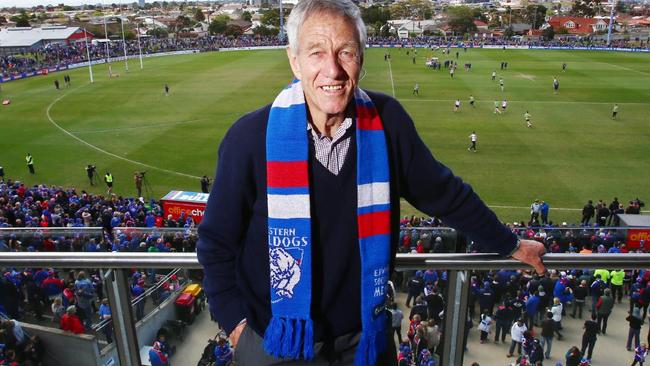
Western Bulldogs legend John Schultz attended Caulfield Grammar School as a boarder and showed his mettle in sport.
He was a member of the school swimming team in 1954, and the school open swimming champion in 1955.
He was a member of the school athletics team in 1955, winning the open high jump at the Associated Grammar Schools of Victoria (AGSV) Combined Sports.
In football, he played in the Caulfield team that won the 1954 AGSV premiership and was named as one of the best players in the 1955 team that dominated the AGSV competition and won another premiership.
As documented in the 1955 school magazine’s football report: “Schultz deserves special mention, for his ruck work was truly superb; he was one of the best followers the school has had for years.”
In 1957, he attracted the attention of a scout from the Footscray Football Club and made his senior debut for Footscray in the first game of the 1958 Victorian Football League (VFL) season and during an outstanding first year was selected to play for Victoria.
Schultz went on to play 188 games for Footscray from 1958 to 1968, winning the club best-and-fairest award five times and was vice-captain for nine years.
He won the Brownlow Medal for the fairest and best player in the VFL in 1960, represented Victoria 24 times and was a member of the Footscray team that lost the 1961 grand final to Hawthorn. He was also selected in the All Australian side in 1961.
Following his retirement from football, he served with distinction as a member of the League Tribunal.
In 1996, he was inducted into the AFL Hall of Fame and, in 2002, was selected in the back pocket in the Footscray/Western Bulldogs Team of the Century (the Western Bulldogs name was adopted in late 1996).
In 2012, Schultz was elevated to “Legend” status in the Footscray/Western Bulldogs Hall of Fame and in 2016 was invited by the AFL to present the Premiership Cup after the Bulldogs won their first premiership since 1954.
He now lives in retirement at Shoreham on the Mornington Peninsula.
10. LINDSAY THOMPSON AO, CMG, CLASS OF 1941
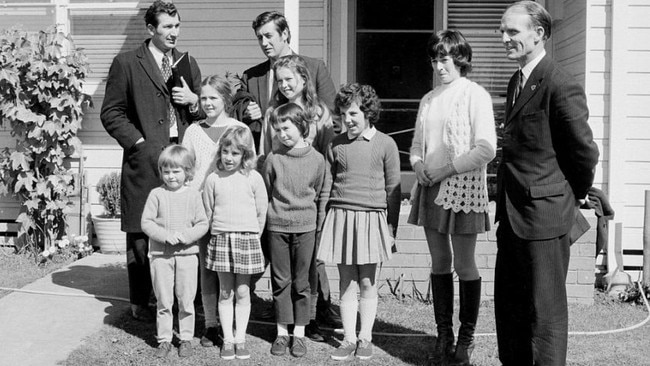
Premier of Victoria from June 1981 to April 1982, Lindsay Hamilton Simpson Thompson was born on October 15, 1923.
He was enrolled at Caulfield Grammar School in 1929 and completed his secondary education in 1941.
In 1942, he joined the AIF as a signalman, training in Victoria and then served in Queensland and New Guinea.
He was discharged from the Army in October 1945 and gained his first experience of political campaigning helping the Liberal candidate for Hawthorn, Fred Edmunds, in the 1945 state election.
A decade on, he gained preselection for the Upper House seat of Higginbotham and was elected to parliament in 1955.
Lindsay was member for Higginbotham (later called Monash) from 1955 to 1970, then transferred to the Lower House seat of Malvern, where he served from 1970 to 1982.
As Minster for Housing and Forests (1961 to 1967) he facilitated home ownership for Victorians and helped eradicate the slums in Melbourne’s inner-city suburbs.
As Minister for Education (1967-1979) he oversaw a challenging period marked by a massive increase in demand for teaching services and significant militancy among teacher unions.
Lindsay believed that a solid education allowed young people to develop their spiritual, mental, physical and creative powers, thereby equipping them for life.
In 1969, he published a book, Looking Ahead in Education, in which he made 65 recommendations on changes to the education system. By the 1990s most of them had been implemented.
In 1972, a teacher and six children were kidnapped at a school in the country town of Faraday by two men demanding a $1 million ransom.
They demanded the ransom be delivered by Lindsay outside the Woodend Post Office the following morning.
Lindsay went to the post office but the kidnappers didn’t show.
The teacher and children subsequently escaped after kicking the lock open in the back of a panel van in which they were being held.
Lindsay received a Bronze Medal for Bravery from the Royal Humane Society for his actions.
In 1977, Lindsay had to again deal with the kidnapping of schoolchildren and their teacher, this time at Wooreen.
He offered to exchange himself for the hostages, but this offer was never acted on as one of the hostages was able to escape during the night and alert police.
During Rupert Hamer’s term as Victorian Premier, Lindsay was Deputy Premier.
In June 1981, Hamer resigned as Premier amid unrest within the parliamentary party and Lindsay was elected to take his place.
Then came the April 1982 elections. The Liberals were defeated and Lindsay resigned as Liberal leader and from parliament the following October.
Lindsay Thompson, AO CMG, died on July 16, 2008.
Details: caulfieldgs.vic.edu.au
READ MORE:
GENAZZANO FCJ COLLEGE KEW TOP 20 STUDENTS


